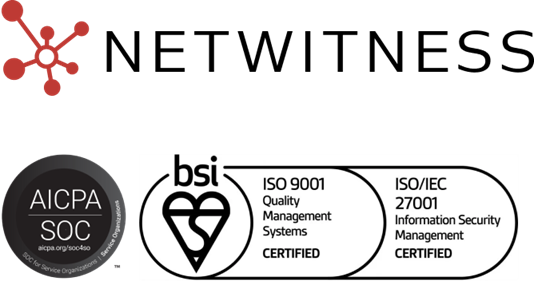What is Threat Hunting Process?
The threat hunting process is the proactive pursuit of cyber threats that have evaded traditional security defenses. Instead of waiting for alerts, security analysts actively investigate their network, endpoints, and cloud environments for early signs of compromise. This approach helps organizations stay one step ahead of attackers and minimize the impact of potential breaches.
The threat hunting process is a systematic approach to identifying and eliminating hidden cyber threats within an organization’s environment. It’s a shift from reactive defense to proactive threat hunting, combining human expertise, automation, and contextual data to detect suspicious behavior before it escalates.
A typical cyber threat hunting process involves collecting and analyzing security data across logs, endpoints, and network traffic to uncover anomalies that might signal an intrusion. Threat hunters rely on cyber threat hunting tools to connect patterns, form hypotheses, and confirm potential attacks.
Synonyms
- Threat Hunting Methodology
- Cyber Threat Hunting
- Threat Hunting Framework
- Hypothesis-driven Hunting
Why Threat Hunting Process Matters
Modern attackers are stealthy, they blend in with normal network activity and bypass standard defenses. This makes the threat hunting process essential for any mature SOC (Security Operations Center).
Here’s why it matters:
- Detects the Unknown: Finds adversaries who operate quietly within your environment.
- Enhances Network Threat Analysis: Improves visibility across cloud, network, and endpoint layers.
- Reduces Dwell Time: Shortens the window between compromise and detection.
- Strengthens Defense Posture: Makes your organization more resilient to evolving cyber threats.
In short, cyber threat hunting transforms your security team from passive responders into proactive defenders.
How Threat Hunting Process Works
Most threat hunting methodologies follow a repeatable framework:
- Form a Hypothesis – Threat hunters start with a theory, based on recent threat intelligence or observed anomalies, that a particular type of attack may exist within the network.
- Data Collection and Analysis – Logs, network telemetry, and endpoint data are examined using cyber hunting tools to spot patterns and anomalies.
- Investigation and Validation – Through advanced threat hunting techniques, analysts confirm whether the behavior is malicious and traces its origin.
- Response and Lessons Learned – Once a threat is verified, response teams isolate and eliminate it. Findings are then documented to refine future hunts.
These steps align with common threat hunting frameworks, such as MITRE ATT&CK®, ensuring consistency and measurable improvement across hunts.
Best Practices for Effective Threat Hunting Process
To make the cyber threat hunting process more efficient and impactful:
- Leverage Managed Threat Hunting: Outsource to experts who provide round-the-clock monitoring and threat hunting services.
- Integrate Threat Intelligence: Use external and internal data to guide your hypotheses.
- Adopt the Right Tools: Invest in cyber threat hunting tools that provide unified visibility and automated correlation.
- Standardize with Frameworks: Follow structured threat hunting frameworks for repeatability.
- Iterate and Improve: Document results, refine methods, and update your threat hunting techniques regularly.
NetWitness Connection
NetWitness gives security teams complete visibility across network, endpoint, and cloud environments, making the threat hunting process faster and more accurate. With advanced analytics, automation, and AI-driven threat hunting solutions, NetWitness empowers threat hunters to detect, investigate, and neutralize threats before they escalate.
Explore how NetWitness Threat Hunting Services can transform your SOC into a proactive defense powerhouse.
Related Terms & Synonyms
- Threat Hunting Methodology – The structured, step-by-step approach used to plan and conduct a threat hunt effectively.
- Cyber Threat Hunting – The broader discipline of proactively identifying and neutralizing cyber threats within digital environments.
- Managed Threat Hunting – A service model where external experts continuously perform hunts on behalf of an organization.
- Proactive Threat Hunting – The mindset and practice of searching for threats before alerts are triggered.
- Threat Hunting Framework – A formalized structure that outlines how hunts are planned, executed, and analyzed.
- Cyber Threat Hunting Tools – Software solutions used to detect anomalies, analyze behavior, and automate parts of the hunting process.
- Threat Hunting Solutions – Comprehensive platforms that combine analytics, automation, and visualization for effective threat detection.
People Also Ask
1. What is threat hunting?
Threat hunting is the proactive process of identifying and eliminating cyber threats that may have evaded traditional detection methods. It involves continuous analysis, investigation, and response.
2. What is threat intelligence?
Threat intelligence provides context – data on attacker tactics, tools, and behaviors that informs and enhances every stage of the threat hunting process.
3. How to configure a network for network security threat hunting?
Enable centralized logging, deploy network threat analysis tools, and ensure visibility into endpoint and cloud traffic to capture all relevant security data.
4. Which premise is the foundation of threat hunting?
The foundation of threat hunting is the belief that every network is already compromised or could be. This assumption drives continuous, proactive analysis to uncover hidden adversaries.




